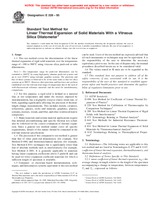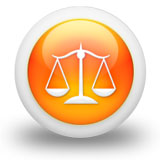Potrebujeme váš súhlas na využitie jednotlivých dát, aby sa vám okrem iného mohli ukazovať informácie týkajúce sa vašich záujmov. Súhlas udelíte kliknutím na tlačidlo „OK“.
ASTM E228-95
Standard Test Method for Linear Thermal Expansion of Solid Materials With a Vitreous Silica Dilatometer (Withdrawn 2005)
Automaticky preložený názov:
Štandardná skúšobná metóda pre lineárnej tepelnej rozťažnosti pevných látok S sklený oxidu kremičitého dilatometru ( Withdrawn 2005 )
NORMA vydaná dňa 1.1.1995
Informácie o norme:
Označenie normy: ASTM E228-95
Poznámka: NEPLATNÁ
Dátum vydania normy: 1.1.1995
Kód tovaru: NS-44895
Počet strán: 7
Približná hmotnosť: 21 g (0.05 libier)
Krajina: Americká technická norma
Kategória: Technické normy ASTM
Anotácia textu normy ASTM E228-95 :
Keywords:
Cement, Ceramic materials, High modulus fibrous composites, Length, Linear changes/linearity, Minerals, Mortar-cement mortar, Plastics (general), Plastic sheet and film, Refractories (general), Reinforced thermosetting plastics, Rock, Solid phase materials, Temperature tests, Thermoplastics, Thermosetting plastics, Vitreous silica dilatometer, Wood products, linear thermal expansion of solid materials (over temperature range from, -180 to 900°C), using vitreous silica dilatometers, test,
Doplňujúce informácie
| 1. Scope | ||||||||||||||
|
1.1 This test method covers the determination of the linear thermal expansion of rigid solid materials over the temperature range of -180 to 900°C using vitreous silica push-rod or tube dilatometers. Note 1-The temperature range for push-rod dilatometers can be extended to 1600°C by using high-purity alumina push-rod systems and up to over 2500°C using isotropic graphite systems. The precision and bias of these systems is believed to be of the same order as that for silica systems up to 900°C. However, their precision and bias have not yet been established over the relevant total range of temperature due to the lack of well-characterized reference materials and the need for interlaboratory comparisons.1.2 For this purpose, a rigid solid is defined as a material that, at test temperature and under the stresses imposed by instrumentation, has a negligible creep or elastic strain rate, or both, regarding significantly affecting the precision of thermal-length change measurements. This includes metals, ceramics, refractories, glasses, rocks and minerals, graphites, plastics, cements, mortars, woods, and fiber, and other reinforced matrix composites. 1.3 Many materials and certain material applications require that detailed preconditioning and specific thermal test schedules be followed for the correct evaluation of thermal expansion. Since a general test method cannot cover all specific requirements, details of this nature should be contained in the relevant material specification. 1.4 The precision of this comparative test method is greater than that of other push-rod dilatometery (for example, Test Method D696) and thermomechanical analysis (for example, Test Method E831) techniques but is significantly lower than that of absolute methods such as interferometry (for example, Test Method E289). It is generally applicable to materials having linear expansion coefficients above 5 [mu]m/m[dot]K and can be used for lower expansion coefficient materials for which a sufficient length of specimen is available. 1.5 Computer- or electronic-based instrumentation, techniques, and data analysis systems equivalent to this test method can be used. Users of the test method are expressly advised that all such instruments or techniques may not be equivalent. It is the responsibility of the user to determine the necessary equivalency prior to use. In the case of dispute only, the manual procedures described herein are to be considered valid. 1.6 The values stated in SI units are to be regarded as the standard. 1.7 This standard does not purport to address all of the safety concerns, if any, associated with its use. It is the responsibility of the user of this standard to establish appropriate safety and health practices and determine the applicability of regulatory limitations prior to use. |
||||||||||||||
| 2. Referenced Documents | ||||||||||||||
|
Odporúčame:
Aktualizácia zákonov
Chcete mať istotu o platnosti využívaných predpisov?
Ponúkame Vám riešenie, aby ste mohli používať stále platné (aktuálne) legislatívne predpisy
Chcete vedieť viac informácií ? Pozrite sa na túto stránku.




 Cookies
Cookies
